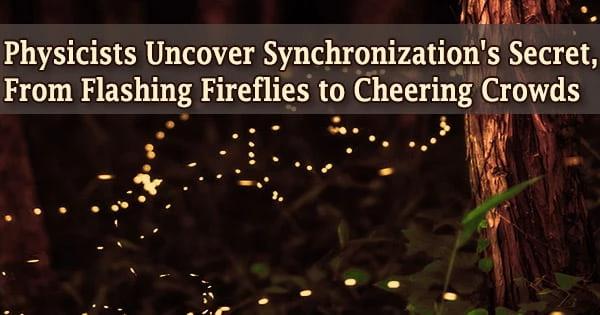Trinity College Dublin physicists have figured out how big groupings of individual “oscillators,” such as flashing fireflies, cheering crowds, ticking clocks, and clicking metronomes, tend to synchronize when they’re in the same room.
Their research, which was recently published in the journal Physical Review Research, provides a mathematical foundation for a phenomenon that has baffled millions of people. Their newly developed equations explain how individual randomness in the natural world, as well as in electrical and computer systems, can lead to synchronisation.
In long-distance maritime navigation, timekeeping and synchronization of clocks is key issues. Before radio navigation and satellite navigation, navigators had to use accurate time and astronomical observations to figure out how far east or west their ship had traveled.
Marine navigation was revolutionized when an accurate marine chronometer was invented. We’ve long known that physically connecting two clocks that operate slightly faster than each other can make them tick in time.
However, synchronizing a big group of clocks in this manner was supposed to be much more difficult, if not impossible, if there were too many of them. The Trinity researchers’ discovery, on the other hand, illustrates how synchronization can happen even in very massive clock assemblies.
Data streams are received and delivered accurately, and data collision is avoided, thanks to synchronization between network nodes. To maintain proper signal timing, it commonly uses a clock signal delivered in tandem with a data stream.
The equations we have developed describe an assembly of laser-like devices acting as our ‘oscillating clocks’ and they essentially unlock the secret to synchronisation. These same equations describe many other kinds of oscillators, however, showing that synchronisation is more readily achieved in many systems than was previously thought.
Dr. Paul Eastham
Dr. Paul Eastham, Naughton Associate Professor in Physics at Trinity, said:
“The equations we have developed describe an assembly of laser-like devices acting as our ‘oscillating clocks’ and they essentially unlock the secret to synchronisation. These same equations describe many other kinds of oscillators, however, showing that synchronisation is more readily achieved in many systems than was previously thought.”
“From flashing fireflies and clapping crowds to electrical circuits, metronomes, and lasers, many items that demonstrate repeating behavior might be considered clocks. They will oscillate at somewhat different rates if they are separated, but when they are joined together, their mutual impacts can overcome this variance.”
Synchronization is the foundation of a multithreaded application’s asynchronous execution of several threads. It allows you to share resources like file processing, network connections, and memory by coordinating threads and processes to prevent data corruption.
This new discovery has a number of possible applications, including the development of new types of computer systems that process data using light signals.
The Trinity Centre for High-Performance Computing, which was financed by Science Foundation Ireland, was part in the study, which was funded by the Irish Research Council.
















